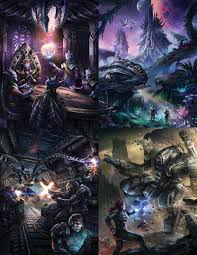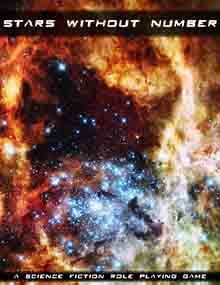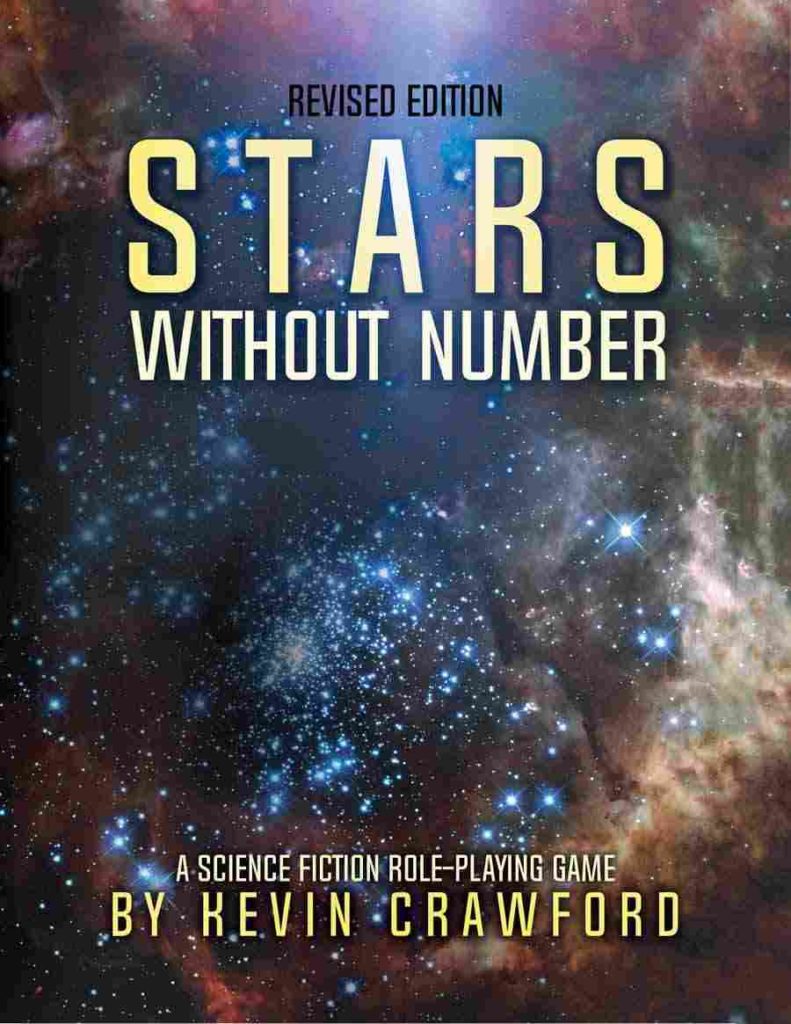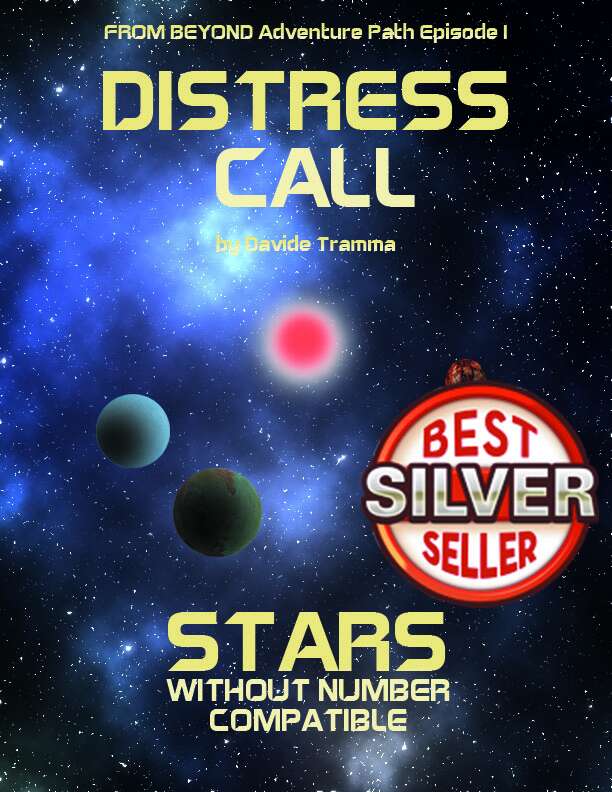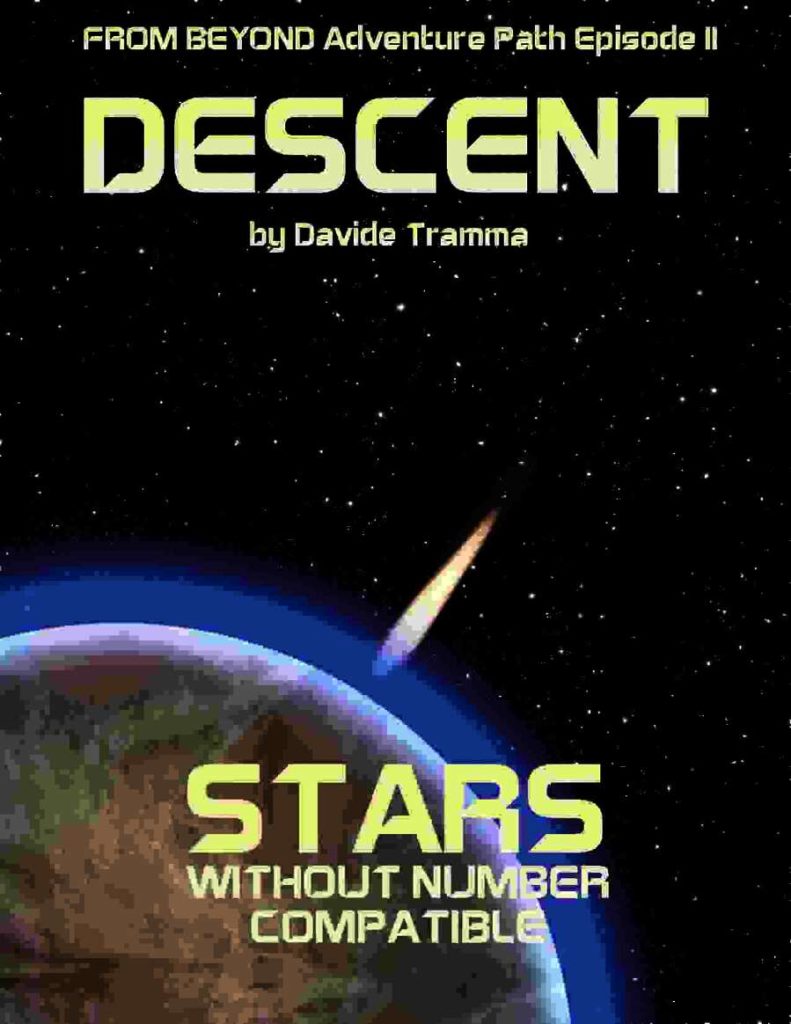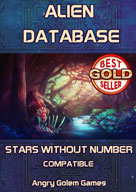A quick review of the main traits of this Best Seller sci-fi retró roleplaying game
Follow the Stars Without Number community on reddit
Let’s have a look at what Stars Without Number – or SWN – is, letting aside any considerations about how cool are retro RPGs and OSR in general, focusing instead on the main mechanics and innovative rules this RPG provides to the Game Master and the Players.
I said innovative because Stars Without Number, even if transmitting the flavor of an OSR rpg, contains many innovative aspects that the average games of the past lacked.
I mean that, if you could implant the basic mechanics of SWN into the classic OD&D system, you would improve the game.
I have no doubt about that.
THE RULEBOOK
I have split the book into three main blocks.
The core mechanics, the campaign setting and the sandbox tools.
Note: the rulebook exist both in a free version and in a standard version. You can con find the link of both at the bottom of this article.
THE CORE MECHANICS
In this paragraph we explains some interesting points that characterize the Stars Without Number mechanics.
The core mechanics are D20/2d6 based.
D20 is employed for hit rolls and saves (which stands for saving throw).
2d6 are employed for skill rolls, thus providing a non-linear distribution when you roll for success or failure.
Six ability score are present. Str, Dex, Con, Int, Wis, Cha. You roll your stats with 3d6 – or whatever method you prefer. However, if you want to get stick to Old School game style, you should roll 3d6 for each ability score and assign the result in sequence.
Saving throws follow the Old School principle. It means there is no DC, so that in order to score a successful saving throw you have to roll a number equal or higher than your save. Saving throws are Physical, Evasion and Mental. Pretty simple and practical.
Skills instead, are DC based, but you roll 2d6 to determine success or failure. The rulebook provides 19 skills, but no one prevents the Game Master from splitting a skills into more, or creating new ones as the need arises. Skills are not strictly related to an ability score, indeed the rulebook suggests that, when you roll for a skill check, the Game Master may state that a specific ability modifier applies.
Starships and combat rules are detailed. Inside the rulebook you find exhaustive rules on how to handle skirmishes in the void. The pillar of this combat system is based on the concept of Command Points. You spend command points in order to use your ship during a fight.
THE CAMPAIGN SETTING
The campaign setting, so as it is described in the rulebook, in human-centered with a hard sci-fi flavor. A once great human empire ruled the galaxy, but it collapsed a long time ago during an event called The Scream. A sort of post-apocalyptic scenario projected in the future. Terra exists, but few cares or know where it is.
Of course you can split the core mechanics from the campaign setting, meaning that the two elements are completely separated.
Hard Sci-Fi because magic as we usually know it is not present, even if an expansion exist for those Game Masters who wants magic in their sci-fi sessions.
Psionic powers are available, so that you can have something “supernatural” to work on. However psionic powers are dangerous, and were caused by the humans employing FTL travels. Indeed, psionic is a playable class and a good portion of the rulebook talks about this aspect. Psionic powers are treated like skills, so 2d6 rolls.
Sentient aliens are a very rare discovery. It is not like Star Trek where you find an alien civilization at every corner of the galaxy, going against every statistical chance. Finding a thriving alien civilization is even more rare, because most of the time you find the ruins of an alien civilization.
Humans are scattered among the galaxy. After the scream, human’s colonies remained isolated for centuries, developing their own culture and technologies, but almost all of them never managed to reach the peaks of the old human empire.
SANDBOX TOOLS
This a very interesting aspect of the rulebook. It provides plenty of suggestions about how to build sectors, colonies and other stuff. It does so by means of tables and tags. The system is easy, elegant and provides plenty of combinations. What matters most is being able to make connections between the random rolls and improvise a bit. The funniest part is rolling stuff on your own and prepare dozens of possible scenarios.
MORE STUFF
In this paragraph we talk about other content of the rulebook that deserve to be mentioned for their peculiarity.
Stars Without Number provides the possibility to play Factions. Indeed the rules describe an elegant mechanism to run massive games as a faction more than a group of characters. The faction play has its own core mechanics and action economy, and again it is very elegant and quite easy to understand.
Building and Fitting
Of course you can build starships and fit them. Beware however, because starships are very expensive. You have starship categories called Hulls, and you can fit these hulls with plenty of stuff. In few words, every hull has its own power and mass, and every fitting takes a specific amount of power and mass.
EQUIPMENT & TECHNOLOGY LEVEL
Standard equipment is comes with a technology level or TL. Technology level starts from 0 and ends with 5. The average technology level contemplated in the campaign setting is 4 and sometimes 5. However nothing prevents you from playing characters coming from a Stone Age technology level that suddenly has a contact with an advanced starship that lands on your planet.
CONCLUSIONS
The game is good. You can learn the rules quickly, and you can deploy a game in less time than D&D, Starfinder or Traveller.
Also, there is room for a lot of homebrewing and custom solutions, which is a typical aspect of every Old School game.
Beware, because in space death is sudden and swift!
